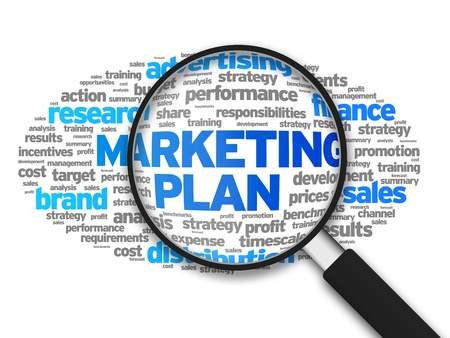Business Plans Need a Credible Marketing Section
Sometimes I see a startup business plan with a credible “mission” to be the “premier brand” for their product, with a less than credible or trivial marketing budget in the financials. This combination will almost certainly get your plan passed over by potential investors, who understand all too well the need and cost of real marketing efforts in today’s business environment.
When questioned, founders usually highlight their dependence on word-of-mouth, viral marketing, and a top-quality product. These founders need a reality check on what successful brand names have spent to reach that threshold, and how long it is likely to take. Viral marketing costs big money these days for promotions and videos, which usually means adding at least an extra couple of zero to budget estimates.
Recent new brands like Facebook and Priceline.com each required over $50 million and several years to get to be recognized and trusted worldwide. We know that existing big brands like Apple and Nike continue to spend millions per year just to maintain their brand recognition. In fact, the average spent by Inc 500 companies on sales and marketing is around 10% of overall revenues. For startups, it’s probably a lot higher.
For credibility, my first suggestion is to confine your “premier brand” comments to the long-term vision section of your business plan. Concentrate elsewhere on specific near-term marketing activities (with a cost for each) for this round of funding. By the way, if the marketing section is missing altogether or un-budgeted, you will also likely be “branded” by investors as unfundable.
So what are some credible marketing and promotion steps every entrepreneur should consider? There are many more, but these should get your creative juices flowing:
- Start with a professional website and blog. With these, your business presence can be large and credible even when you are still a startup. A website budget of $10,000 should be more than adequate, since there are multiple low-cost website tools available, like Adobe Dreamweaver, which allow you to do your own work and save thousands of dollars. A blog is critical, and essentially free with WordPress, TypePad, and Blogger (your cost is creating content).
- Do creative things to get customer attention. Promotions and free giveaways are always a good attention-getter. Use real thought here to identify what can set you apart from your competitors and how to retain customers. Promotions that appeal to free-loaders and non-customers won’t help you.
- Use your domain knowledge for visibility. Use social media and Search Engine Marketing (SEM) to make your presence known. Create meaningful content and engage potential customers online (free downloads, white papers, webinars, regular blogging). Put out regular press releases for search ranking and general visibility. Pitch your story to bloggers, newspaper journalists, radio, and television news reporters who cover your local area or industry.
- Focus on partners and referrals. Customers who are totally satisfied with your product or service are more than happy to spread the word. Create referral marketing opportunities using referral marketing software within your business community to maximize the potential for client and vendor referrals. Always find partners and channels which are complementary to your own, and not directly competitive.
- Generate leads from multiple sources. Gather leads online from your social media initiatives, mining personal and business contacts, attending trade shows, using lead-generation services like ZoomInfo, and tools such as a popup builder to capture leads on your website. Here is an area where you need to be creative, and not just spend big money without follow-up. For example, exhibiting at trade shows is very expensive, and usually not very productive, unless every lead is chased to the end. Figure out what is valuable to your target market.
Effective marketing is often the key thing that separates successful startups from struggling ones. There is no doubt that marketing overall has become even more critical for startups over the past several years as people struggle with information overload.
Despite the fact that social networking and other online processes are essentially free, good marketing still costs money for good content and follow-up. If your early-year budgets for marketing aren’t 10% of projected sales or more, plus an early kicker for the initial startup, you are probably jeopardizing your business, as well as your credibility with investors.

